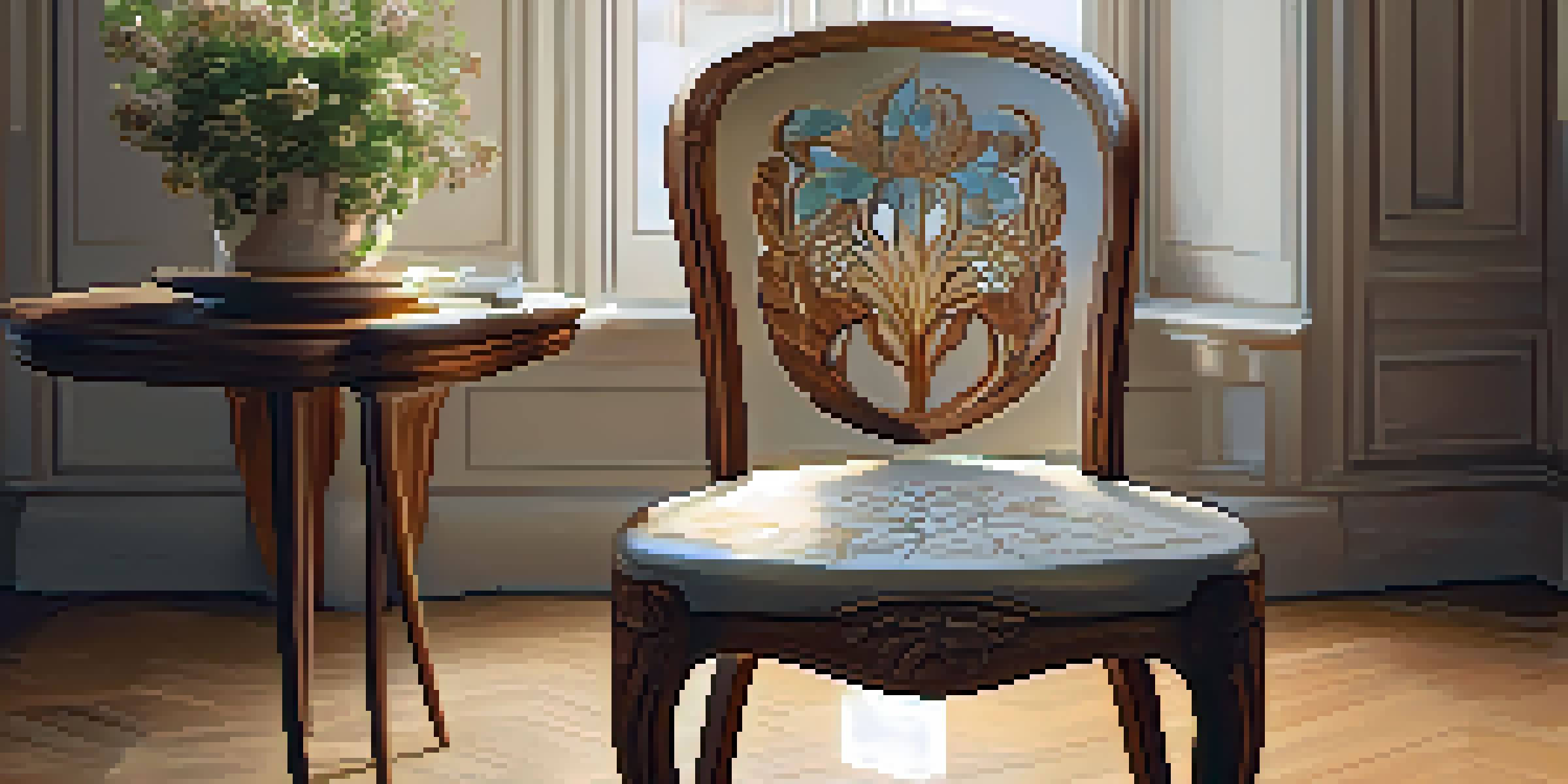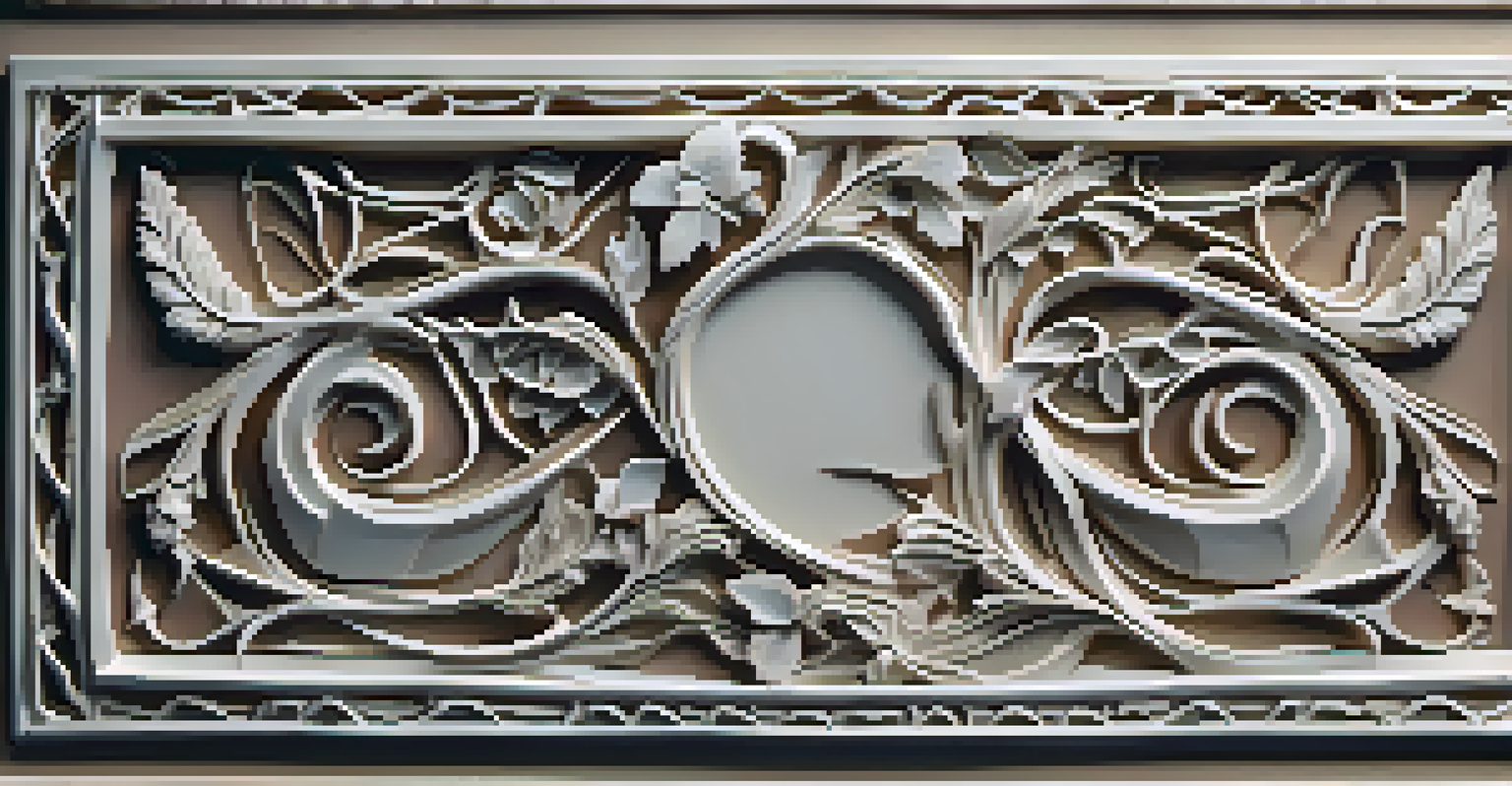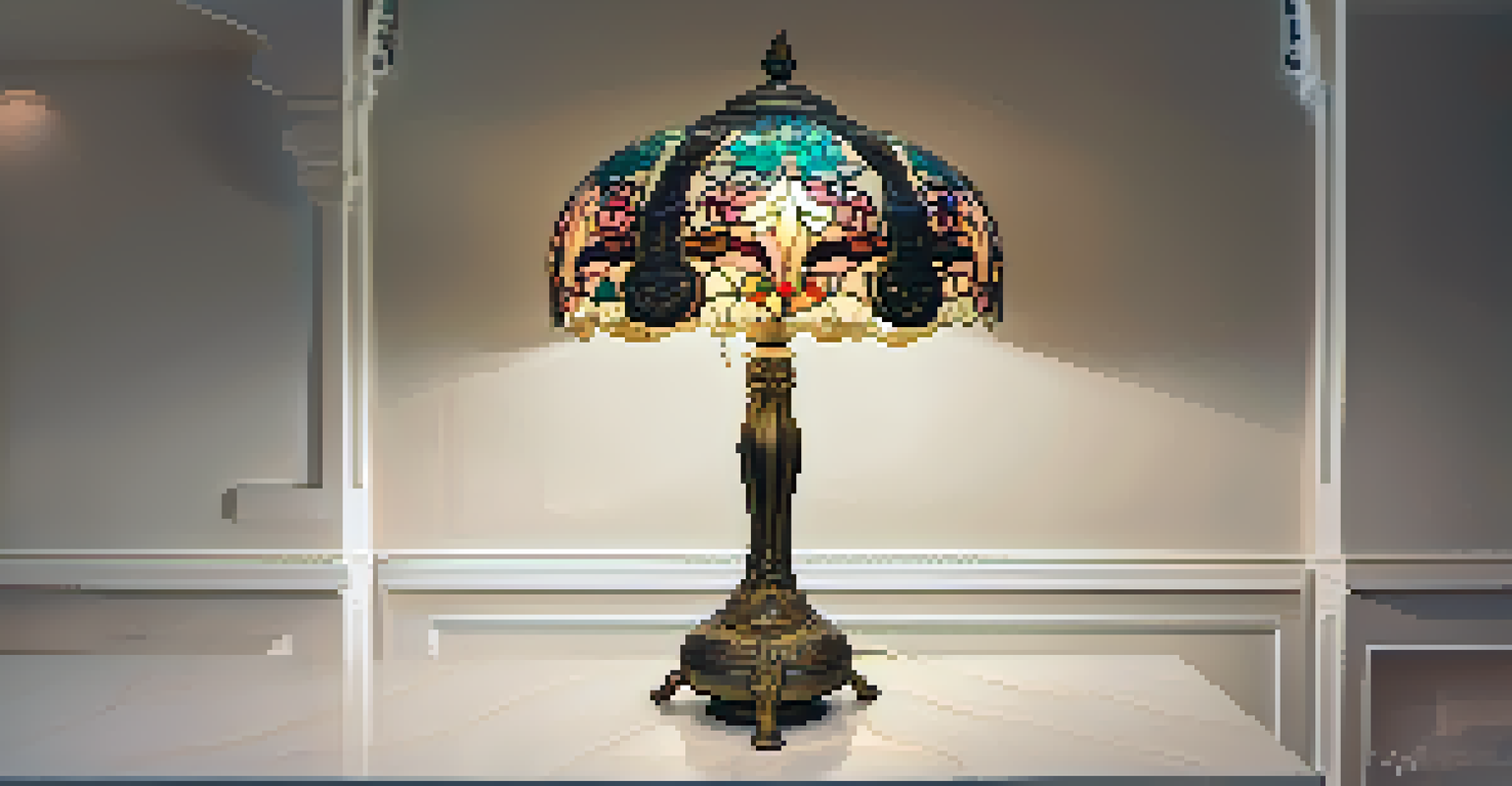Art Nouveau Carving: A Blend of Nature and Design

Understanding Art Nouveau: A Brief Overview
Art Nouveau emerged in the late 19th century as a reaction against the industrial revolution. It sought to revive traditional craftsmanship and integrate art into everyday life. This movement is characterized by its organic forms, flowing lines, and intricate details, all inspired by nature.
The greatest artist is not necessarily the one who creates the best work, but the one who inspires others to create.
Unlike previous artistic movements that often favored symmetry and rigidity, Art Nouveau celebrated asymmetry and the beauty of natural forms. Designers and artists aimed to create a total work of art, merging architecture, furniture, and decorative arts seamlessly. This holistic approach made Art Nouveau a unique and captivating style.
In essence, Art Nouveau isn't just an aesthetic; it's a philosophy that emphasizes harmony between humanity and nature. This connection is pivotal in understanding how the movement influenced various forms of art, particularly in carving, where intricate designs breathe life into materials.
The Role of Nature in Art Nouveau Carving
Nature serves as the primary muse for Art Nouveau carving, inspiring a plethora of designs that evoke the organic world. Artists and craftsmen often incorporated motifs of flowers, leaves, and flowing water into their work, creating pieces that seem to grow and flourish. This emphasis on natural forms creates a strong emotional connection to the environment.

By mimicking the curves and patterns found in nature, Art Nouveau carvers were able to breathe life into their creations. For instance, the sinuous lines of a vine or the delicate petals of a flower can transform an ordinary piece of wood or stone into a stunning work of art. This relationship with nature not only enhances aesthetics but also reflects a deeper appreciation for the world around us.
Nature Inspires Art Nouveau Carving
Art Nouveau carving draws heavily from natural forms, using motifs like flowers and flowing lines to create pieces that evoke a deep connection to the environment.
Moreover, the incorporation of natural elements into design fosters a sense of tranquility and harmony. As viewers engage with these pieces, they often feel a connection to the earth, promoting a mindful appreciation of the beauty and intricacy of nature.
Materials Used in Art Nouveau Carving
Art Nouveau carvers utilized a variety of materials, each selected for its unique properties and ability to convey intricate designs. Wood, stone, and metal were among the most popular choices, allowing artisans to explore different textures and finishes. For instance, the warm tones and grains of wood complemented the organic themes prevalent in this art movement.
Art is the most beautiful of all lies.
Soft woods like pine and oak provided a malleable surface for detailed carving, while harder stones like marble offered durability and elegance. Metalwork, often featuring brass or bronze, added another dimension to Art Nouveau designs, allowing for both structural integrity and decorative flair. Each material contributed to the overall harmony and beauty of the final piece.
The careful selection of materials also played a significant role in the sustainability of the craft. Many artisans sought to use locally sourced materials, fostering a deeper connection to their environment and ensuring that their work reflected the beauty of the natural world.
Iconic Examples of Art Nouveau Carving
Some of the most iconic examples of Art Nouveau carving can be seen in the works of celebrated artists like Alphonse Mucha and Gustav Klimt. Mucha’s furniture designs often featured elaborate carvings of floral motifs, showcasing his ability to blend function with artistry. These pieces not only served a practical purpose but also captivated viewers with their intricate details.
Another notable figure, Antoni Gaudí, integrated Art Nouveau principles into his architecture, where carved elements adorned buildings like the Sagrada Família. His use of natural forms and fluid lines in stone carving exemplifies how this style transcended traditional boundaries, creating immersive environments that resonate with visitors.
Materials Enhance Artistic Expression
Artisans in the Art Nouveau movement selected materials like wood, stone, and metal for their unique properties, allowing intricate designs that reflect the beauty of nature.
These iconic works serve as a testament to the movement's enduring influence. They inspire new generations of artisans to explore the depths of their creativity while honoring the natural world through their craft.
Techniques in Art Nouveau Carving
Art Nouveau carving techniques vary widely, with artisans employing methods that enhance the organic quality of their designs. One common technique is relief carving, where designs are sculpted to create a three-dimensional effect while still remaining attached to the background material. This approach allows for intricate patterns to emerge, giving depth and texture to the artwork.
Another method is inlay, where different materials are embedded into the carving to create contrast and visual interest. This technique not only adds complexity to the design but also enhances the overall aesthetic appeal. For example, a wooden piece might feature inlaid floral designs made of contrasting materials like brass or mother-of-pearl.
These techniques highlight the skill and dedication of the artisans who bring their visions to life. Each method contributes to the enchanting quality of Art Nouveau carving, ensuring that every piece is both a testament to craftsmanship and a celebration of nature.
The Legacy of Art Nouveau Carving Today
The legacy of Art Nouveau carving continues to influence contemporary artists and designers. Today, many find inspiration in the movement's emphasis on nature and craftsmanship, translating these principles into modern works. This resurgence reflects a growing appreciation for handmade items and a desire to connect with the natural world through art.
Moreover, Art Nouveau's focus on aesthetics and functionality resonates with current trends in sustainable design. As consumers increasingly seek products that are both beautiful and environmentally conscious, the principles of Art Nouveau offer a guiding philosophy for modern creators. This blend of artistry and sustainability is more relevant now than ever.
Legacy Influences Modern Design
The principles of Art Nouveau carving continue to inspire contemporary artists, blending traditional craftsmanship with modern aesthetics to create sustainable and visually striking works.
As we move forward, the enchanting spirit of Art Nouveau carving remains alive, encouraging a deeper bond with nature and a commitment to craftsmanship. This enduring legacy serves as a reminder that art can inspire and elevate our everyday lives.
Exploring Art Nouveau Carving in Modern Design
In modern design, the influence of Art Nouveau carving is evident in various fields, from architecture to interior design and product development. Designers often incorporate organic shapes and nature-inspired motifs, reflecting the movement's enduring appeal. This trend is particularly noticeable in furniture design, where curves and intricate detailing create visually stunning pieces.
Additionally, digital technology has opened new avenues for artists to reinterpret traditional Art Nouveau carving techniques. With tools like 3D printing, designers can experiment with complex forms and materials, pushing the boundaries of what is possible. This fusion of the old with the new allows for a fresh take on a timeless style.

As we embrace these modern interpretations, we can also honor the craftsmanship of the past. By blending traditional techniques with contemporary aesthetics, today's artists are ensuring that the spirit of Art Nouveau carving continues to thrive, captivating audiences for years to come.